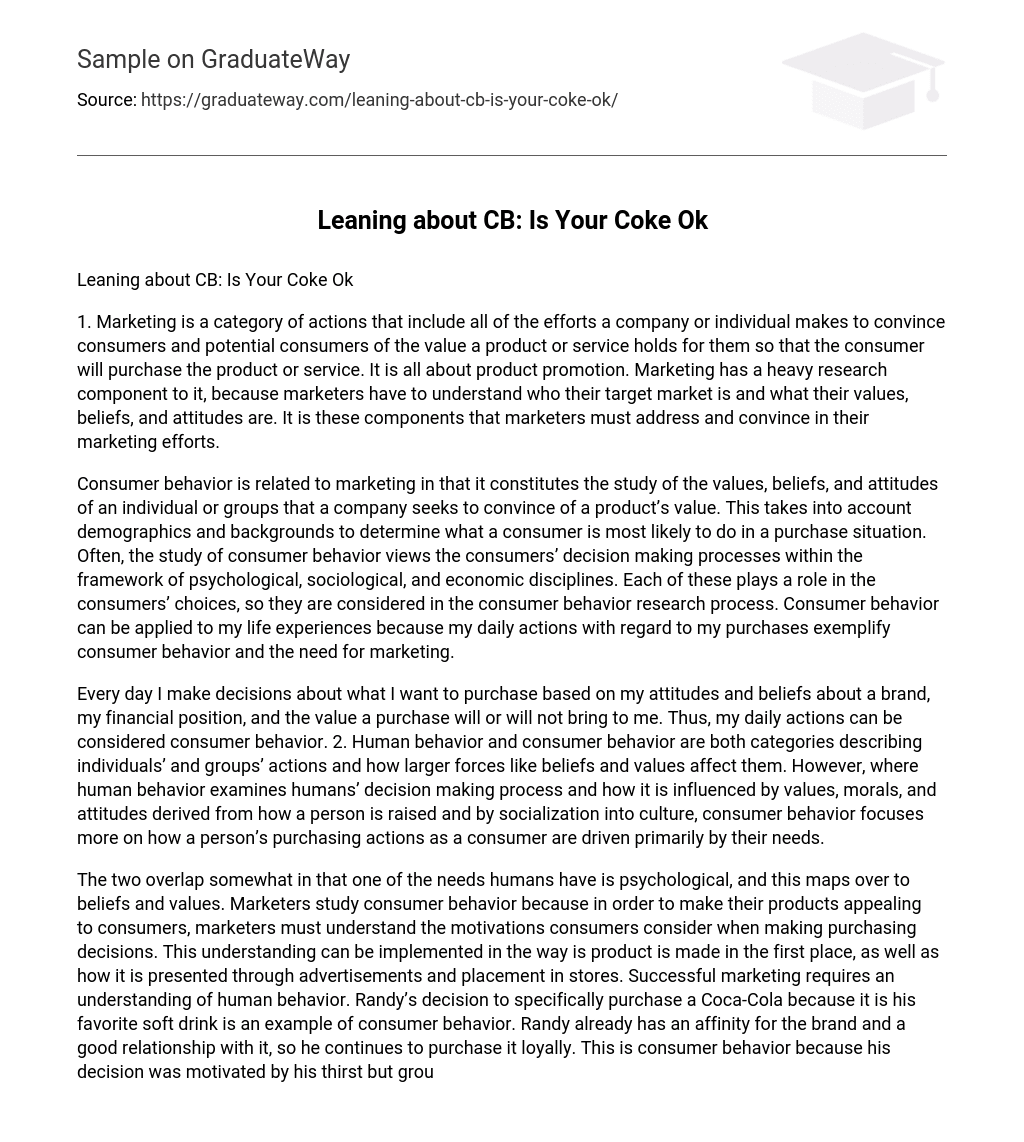Marketing is the process of persuading consumers and potential consumers about the value of a product or service in order to encourage its purchase. This involves various activities conducted by companies or individuals. The main goal is to promote the product, which requires thorough research to understand the values, beliefs, and attitudes of the target market. To ensure successful marketing, it is essential to address and convince these aspects.
Consumer behavior is essentially the examination of an individual’s or group’s values, beliefs, and attitudes, and how these factors influence their perceptions of a product’s worth. In marketing, understanding consumer behavior is crucial as it helps companies tailor their strategies to persuade potential customers. Factors such as demographics and backgrounds play a significant role in determining a consumer’s likely actions in a buying situation.
The study of consumer behavior often examines how consumers make decisions, incorporating psychological, sociological, and economic aspects. These disciplines are important in researching consumer behavior as they influence consumers’ choices. Consumer behavior is relevant to my personal experiences as my everyday purchasing decisions demonstrate consumer behavior and the importance of marketing. I make daily choices about what to buy based on my beliefs and attitudes towards a brand, my financial situation, and the perceived value of a purchase. Therefore, my everyday actions can be seen as examples of consumer behavior.
Human behavior and consumer behavior are both concerned with the actions of individuals and groups, and how larger forces such as beliefs and values influence them. However, human behavior primarily explores the decision-making process shaped by one’s upbringing, values, morality, and socialization into a particular culture. On the other hand, consumer behavior centers on the purchasing actions of individuals as consumers, primarily driven by their needs.
Both humans have psychological needs that correlate with their beliefs and values. Marketers analyze consumer behavior to comprehend the motivations behind their purchasing decisions. This knowledge is applied to the product’s design, advertising strategies, and in-store placement to increase its appeal to consumers.
Understanding human behavior is crucial for successful marketing. An example of consumer behavior is Randy’s choice to purchase a Coca-Cola because it is his preferred soft drink. Randy’s loyalty towards the brand stems from his existing affinity and positive relationship with it. His decision to buy the beverage is influenced not only by his thirst but also by his beliefs, values, and attitudes towards the brand.
The failure of OK Coke and New Coke can be attributed to various factors. Firstly, the marketers mistakenly believed that using the word “ok,” which is globally recognized as the second most familiar term, would generate a positive impression. However, “ok” often conveys mediocrity and lack of excitement, qualities that are not desirable for the brand. Moreover, another error was made by assuming that modifying the product’s formula was necessary simply because its market share was declining instead of reassessing its branding and marketing strategy towards consumers.
Rather than altering the formula, the focus should have been on rebranding itself. Marketers should have prioritized conveying how the brand meets the needs and aligns with the values and perceptions of both the target audience and current customers.
On the first day, I had early classes and had to buy breakfast instead of preparing it. At the store, I had three options: fresh fruit, Naked Juice, or a frozen breakfast Hot Pocket. Since I prefer healthy and organic food, I chose to buy the Naked Juice.
The decision to choose Naked Juice instead of fresh fruit was driven by its convenience and appeal, which aligns with the importance consumers place on convenience and health in studies on consumer behavior. To continue attracting customers, Naked Juice should continue promoting the product as a convenient combination of tasty juice and portions of fresh fruit.
On my second day, I visited the mall specifically to purchase shoes for my upcoming spring break vacation. I realized that I lacked a suitable pair of casual and comfortable shoes for walking around, so my goal became finding one.
I visited Off Broadway shoes and selected a pair of Sperry’s boat shoes and Toms as my top choices. Both shoes were affordable and provided the comfort and durability I desired. Ultimately, I bought the Toms because they not only met my needs but also contribute to the global community instead of promoting self-centered fashion.
The decision to buy more bathroom tissue paper at Wal-Mart can be interpreted by a consumer behavior researcher as driven by social consciousness and responsibility. It is crucial for Toms to maintain a marketing strategy that highlights the brand’s dedication to supporting communities, as this will strengthen this perception. When I visited Wal-Mart on the third day, I found myself faced with over ten different options in the aisle.
Regarding toilet paper, I have no brand preference. Therefore, I opted for the most affordable option that appeared to be of decent quality – a four-roll pack of Scott tissue paper. From the perspective of consumer behavior research, my decision can be attributed to a lack of loyalty towards brands and an emphasis on cost-effectiveness. Consequently, Scott brand met both my requirements for affordability and quality.





